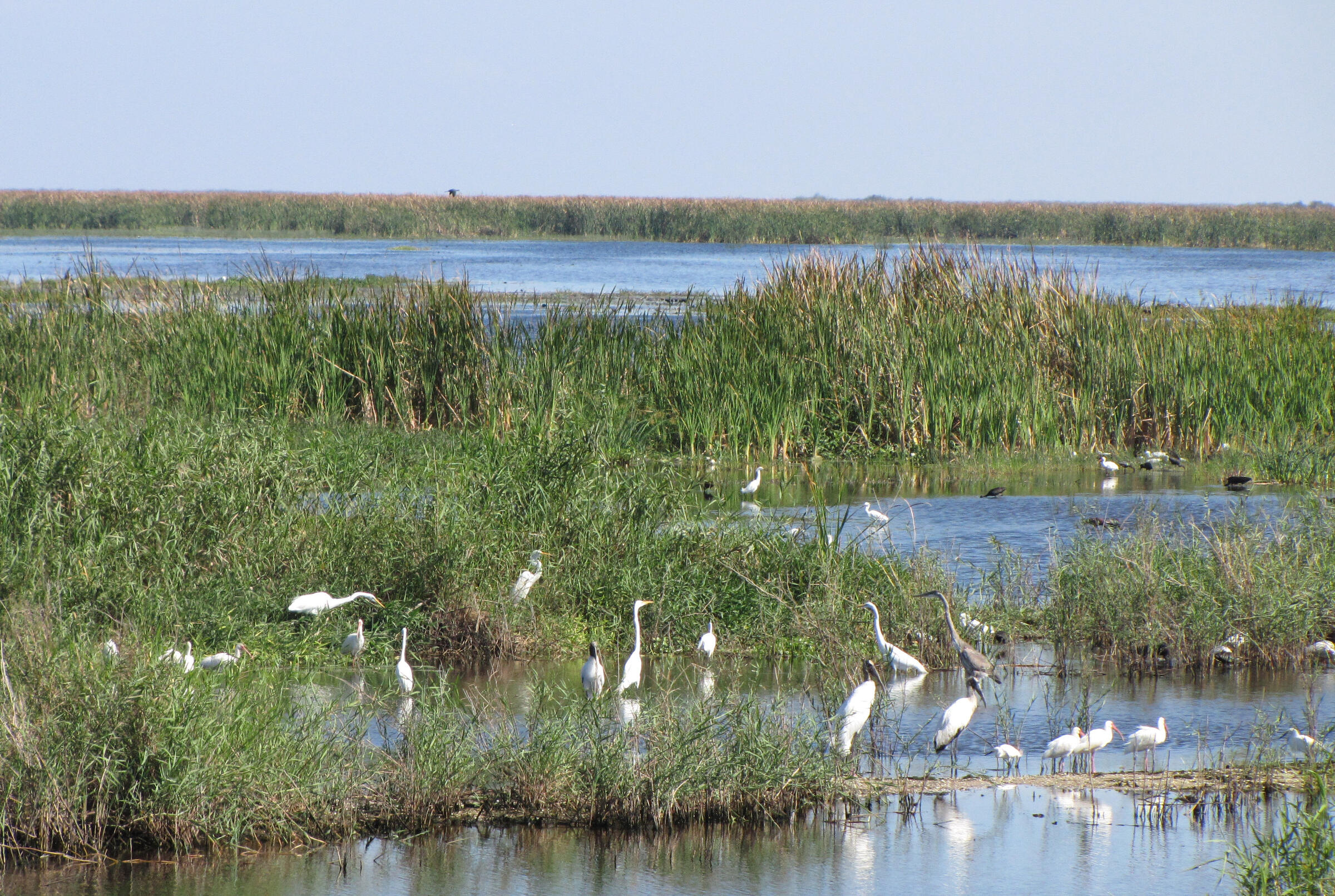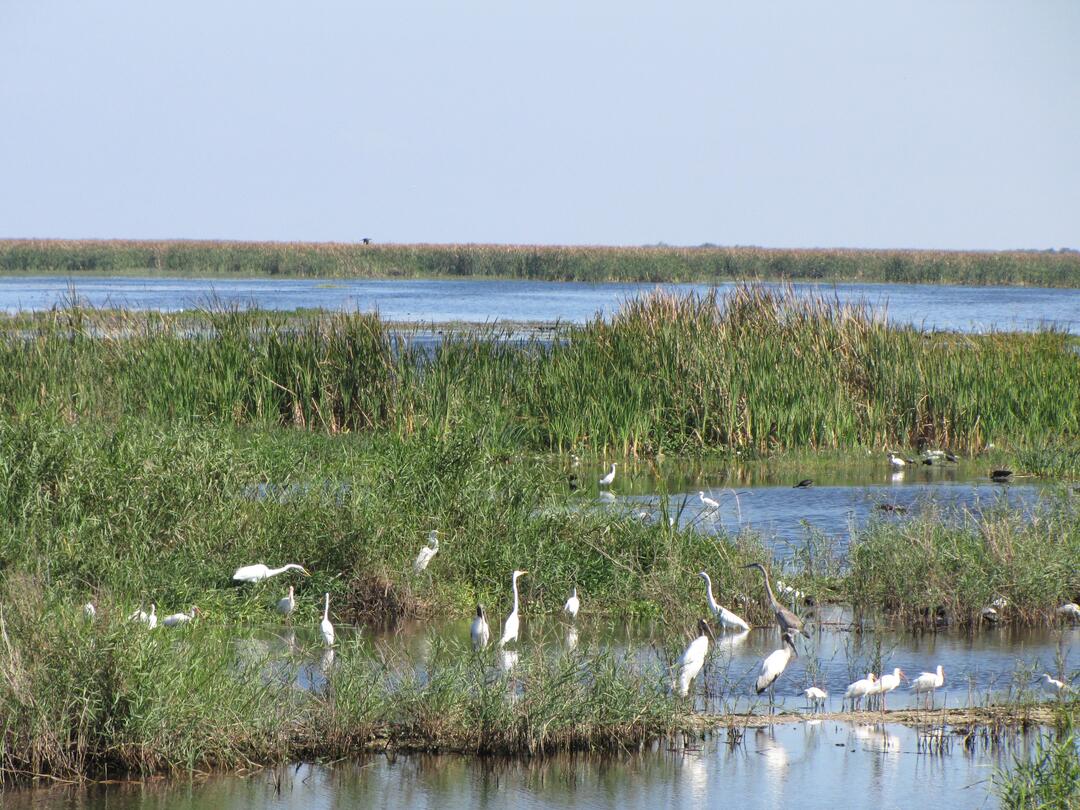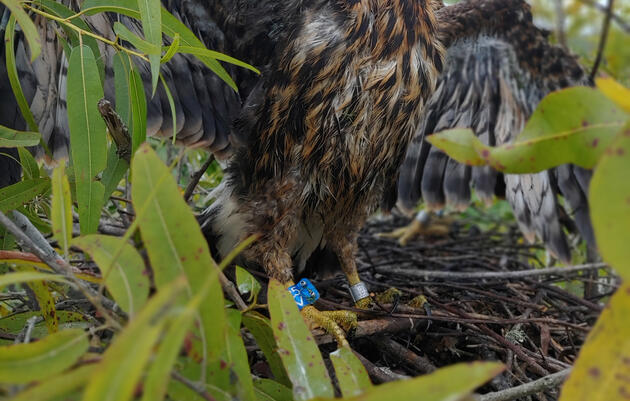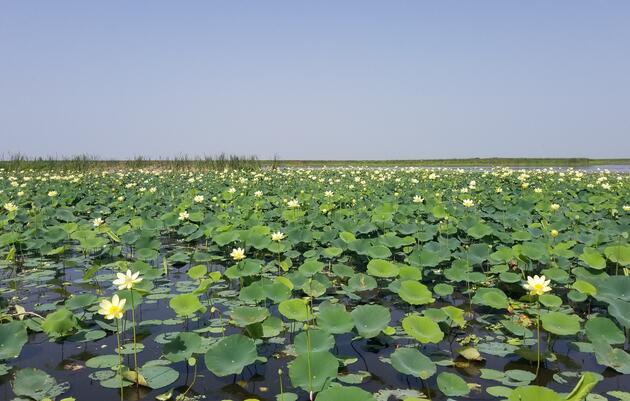Looking down at the Everglades from a thousand feet, one might see a sea of white wading birds dotting the shallow waters. The Everglades ecosystem is often associated with large colonies of herons, egrets, and other long-legged species that rely on the river of grass for the small fish and other prey items that hide in the waving sawgrasses. However, this watery realm is integral to so many others.
Raptors such as the Snail Kite, Crested Caracara, and Swallow-tailed Kite are among the many species that can tell us about the health of our state. Measured by their presence or absence and breeding success, birds are continuously and increasingly sounding the alarm, underscoring the need for widescale efforts to restore the Everglades ecosystem. Audubon is listening.
The Rise of Audubon
For the past 122 years, Audubon has been the voice of conservation in Florida. In 1900, a handful of dedicated conservationists stepped up to protect birds from being slaughtered for fashion, starting the Florida Audubon Society. They hosted their first meeting in Maitland and shortly thereafter hired wardens - including Guy Bradley and Marvin Chandler - to protect birds in the Everglades from plume hunters and poachers.
In 1999, the Florida Audubon Society joined up with the National Audubon Society to become Audubon Florida. With staff spread out across the state, Audubon still uses the historic Maitland location, now called the Audubon Center for Birds of Prey, as a hub for rehabilitating raptors.
Plume hunters were the first of many menaces to appear in the Everglades. Once Audubon helped enact bird protection laws such as the Migratory Bird Treaty Act and the Lacey Act, the poaching threat dissipated. It became clear, however, that human development would be an even bigger threat to birds as Florida rushed to “improve” the wetlands and prairies that not only provided wildlife habitat but also absorbed nutrients and slowly metered out surface water as it oozed to the coast.
Just a Few Inches Can Make or Break a Nesting Season
Over the decades, engineers devised a system of drainage canals, pumps, levees, and roads to move excess rainwater off the land quickly. These efforts made the land more useful for some human purposes but left us with too few places to store and clean water, harming both up- and downstream waterbodies.
Florida is the only state with Snail Kites and they tell us stories about water. The Snail Kite, originally known as the Everglade Snail Kite, is federally listed as Endangered and its presence here is tenuous. Because it specializes in eating only freshwater apple snails, it becomes vulnerable if something happens to the snails. Snail Kites once soared the Florida skies wherever snails were found from the Everglades up through most of the peninsula, but a century of rampant wetland loss and degradation reduced the snail populations, drastically reducing the number of kites.
Leading up to the year 2000, Snail Kite populations were holding steady at around 3,500 birds. In 2001, drought made it impossible for kites to nest or even feed. They lost half their numbers. In 2007-08, another drought caused a 50% population decline, culminating in a loss of 75% of the population in just 10 years. The cycle of water management ups and downs results in inconsistent lake levels, unpredictable food supplies, and uncertain fates of the kites’ watery nest sites.
Coincidentally, around 2008, an invasive apple snail showed up in the Everglades. This snail from South America is three times as large as the native Florida apple snail and more tolerant of degraded water quality and droughts. While its arrival initially seemed like bad news to Everglades biologists, the Snail Kites did figure out how to eat them. Kite numbers even rebounded, but even these snails were not the silver bullet they needed.
“Last year, 2021, when Lake Okeechobee water levels started dropping really, really quickly at the end of the dry season, we had a 90% failure of the kite nests,” said Paul Gray, PhD, Everglades Science Coordinator for Audubon Florida. “These kites are telling us they need help because the watershed doesn’t flow into the lake like it used to. That year, we only had 33 successful nests out of more than 160 that were initiated,” he added.
When water levels rise and fall too quickly at breeding season, even by just a few inches, Snail Kites have trouble. The invasive snails have not successfully invaded the southern Everglades, and where native snail numbers remain low, historic nest sites no longer serve the kites’ needs. Over-drained watersheds create excess freshwater surges during wet periods and virtually no flows remain during the dry season. Water levels in these natural areas no longer reliably support kites or snails.
Still, Snail Kites are resilient and can succeed in locations where water levels support plenty of snails. These birds are moving around and finding new habitat along Lake Okeechobee and northward into the recently restored Kissimmee River Valley. By 2018, Snail Kites re-discovered the area now known as Paynes Prairie Preserve State Park in Alachua County. Bird enthusiasts have since been thrilled to see kites flourish and nest there for the first time in many decades.
The Florida Landscape Has Changed Before
Although birds can adapt to environmental changes over time, human efforts to drain the Everglades have been drastic and often produced myriad unintended consequences. The Crested Caracara is a bird of the watersheds and its story starts in the last ice age. Up until about 10,000 years ago, when much of Earth’s water was locked up at the poles, Florida’s landscape looked a lot like now, but with more prairies and savannahs from here to Texas. Crested Caracaras evolved amidst the now-extinct mastodons and ancient horses that grazed on the savanna. Vestiges of that Florida, caracaras today associate with a new form of megafauna: cows.
Falcon relatives, caracaras have long legs and strong talons, are extremely agile on the ground and find plenty to eat on ranch land. They hunt almost any small prey item that runs, crawls, or slithers, and they even eat carrion; however, they remain extremely particular about where they nest.
Crested Caracaras nearly always nest at the top of a cabbage palm tree surrounded by open field or low vegetation. Fledging juveniles travel to other areas but tend to return to the region where they were born, and mated pairs are very faithful to their breeding sites, often choosing to nest in the same tree, year after year. Caracara numbers dropped when early Florida ranchers saw them as threats to newborn livestock and regularly took their eggs or even shot the birds.
When managed correctly, Florida ranchland can be good Crested Caracara habitat. The birds live in parts of Arizona and Texas, but the ranching belt across the center part of our state is a stronghold. Although the historic conversion of old Florida habitats into arable land through dredge-and-fill practice devastated wetlands, in time, large landowners discovered benefits to protecting birds like caracaras. They began creating ranchland that doubles as wildlife habitat with the help of perpetual conservation easements or other payments. This additional incentive encourages them to protect wetlands, scrub, hammocks, and pine flatwoods and create water storage on their lands.
Storing water in the watershed helps farms while improving water quality. Excess water held on the land either evaporates or percolates into aquifers instead of running off to the coasts, where the nutrients it carries contribute to algal blooms. Florida cattle ranchlands now include some of our state’s most important wildlife habitats. Similarly, as water managers implement more natural solutions to Florida’s water problems, projects such as the Kissimmee River Restoration provide the opportunity for Crested Caracaras to rebound.
“Caracaras are telling us that, if you make this watershed good for us, it's going to have good things for people too,” says Gray.
Jumping Off Point or Point of No Return
Florida, surrounded on three sides by water, acts as a funnel for birds migrating across the Caribbean or Gulf of Mexico each winter. For most, these perilous, even herculean, long-distance marathons require tremendous amounts of energy and luck. As Swallow-tailed Kites tell us, certain locations in the Everglades serve as the last chance to refuel before their trans-oceanic migrations.
Named for its deeply forked tail, this iconic, black-and-white acrobat of the sky comes to North America for the breeding season. A veritable sign of spring for many Floridians, Swallow-tailed Kites begin arriving in south Florida from their wintering grounds in Brazil and Argentina in mid-February, moving farther northward to the Panhandle within one to two weeks. Some nest as far north as South Carolina and west to Louisiana.
In July, their return to wintering grounds begins with several thousand kites staging at Fisheating Creek Wildlife Management Area near Lake Okeechobee before they jump off the tip of South Florida heading for South America.
“We think this may be half of all the Swallow-tailed Kites that nest in North America,” said Gray of the Fisheating Creek kite roost.
In the early 2000s, Fisheating Creek WMA landed at the center of controversy surrounding a drainage canal that was dewatering Cowbone Marsh, the heart of the kite staging area. Litigation ensued and Audubon joined in to protect this vital site.
“That litigation cost us a lot of money and effort, but it's because the kites have told us this is a really, really important spot for their population in North America,” Gray added.
Significant changes in the habitats along migration routes, combined with wind, storms, and a changing climate, result in migrating birds working harder to find what they need. When birds make long migratory flights or cross the ocean, they can lose a third of their body weight in a few days. This south Florida fueling station is critical both as the jumping-off point and as the first sign of land after the long flight back from the tropics, and not just for kites. There is a higher percentage of migratory birds in North America than on any other continent. At least 250 species annually migrate to and from the tropics at the mercy of wind and weather.
Each summer, Swallow-tailed Kites converge in South Florida with the anticipation of finding enough food to fatten up before making their way back south for winter. They know that Fisheating Creek serves up a sumptuous buffet of insects and other prey items rich in protein.
In addition, the return of migratory songbirds each spring is critical to North American agriculture and forestry. Early ornithologists discovered the value that many migratory birds bring to agriculture in the fact that birds eat what eats their crops and trees. Over time, farmers and foresters began to realize that birds are their friends and that the Everglades are critical to their survival.
Birds Tell Us
We need birds more than they need us. They provide pest control, pollination, public health, seed dispersal, ecotourism, and more. They tell us the condition of our state. Snail Kites tell us about the health of the Everglades, lakes, and rivers. Crested Caracaras tell about us the health and function of our watersheds. Swallow-tailed Kites remind us we must take care of billions of migrants traveling between continents. Because the Everglades provide critically important habitat for so many North American species, and especially raptors, it is imperative we keep Florida safe and functioning for them. After all, healthy land and water resources support people too.












